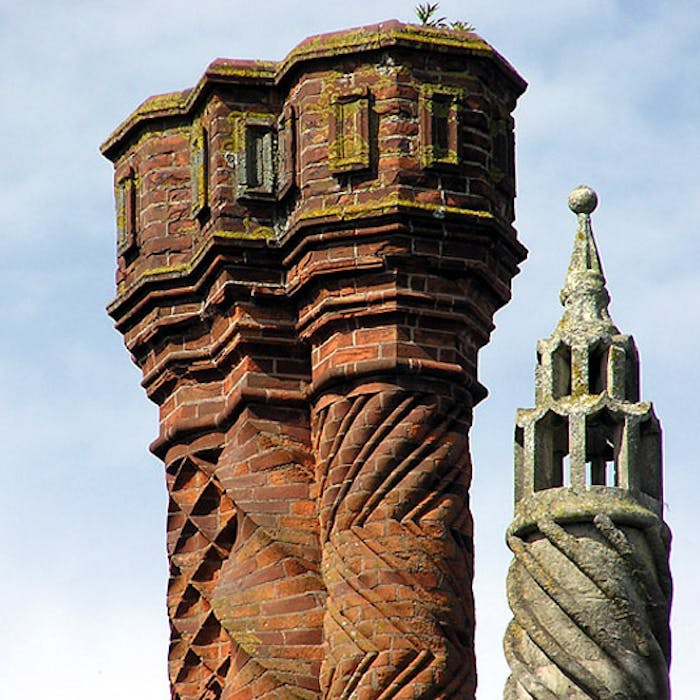
The arrival of the domestic chimney in Britain
From the late Norman period onwards, the arrival of the chimney gradually changed both domestic architecture and social life.
One tends to think of the Medieval period in Britain as a time of little technological or social progress, with everyday life unchanging over the centuries aside from the calamities of war and disease. However, there were, in fact, many innovations over this period which changed the pattern of people's lives. One of these was the arrival of the chimney.
Although the Romans in Britain had sophisticated underfloor heating systems and vents, after their departure the inhabitants of Britain went back to round wooden houses with a central fireplace and a hole in the roof to allow the smoke to escape. Some houses did not even have a hole in the roof at all, but relied on the smoke gradually seeping out through the thatch. The traditional blackhouses of Scotland were of this design.
From the Norman period, chimneys began to appear in the castles and mansions of the wealthy. The fire was moved from the centre to the side of Great Hall, with a dedicated chimney to take the smoke out of the room.
This had some interesting social side effects.
Early Medieval buildings heated by a central hearth required a high ceiling to prevent sparks causing fires and to help to dissipate the smoke. With the adoption of the fireplace and chimney from the Norman period onwards, fewer people could sit around the fire - reducing the value of large rooms. The chimney fostered smaller rooms. Moreover, rooms could now be built above the traditional Great Hall. They were cosier, more private, with their own fireplaces and chimneys - and their lower ceilings resulted in a warmer room.
Smaller rooms could be built for different functions, and this increased social stratification further. The Great Hall became less and less important, and the different social groups mixed less within castles and great houses. The higher ranking residents could spend time in more luxuriously appointed rooms, whilst their servants and assistants could do their work in different quarters of the house, equipped for various functions.
It took many centuries for the chimney to become commonplace in more modest houses, and even nobles tended to install them only as part of a major rebuild. But everyone wants to impress their friends or important visitors with the latest comforts - so the chimney ultimately changed domestic life for good.
Not everyone was keen on these social changes. The poem Piers Plowman (c. 1381) laments the tendency of nobles to take meals in private chambers heated by chimneys:
Woe is in the hall each day in the week.
There the lord and lady like not to sit.
Now every rich man eats by himself
in a private chamber with a chimney
And leaves the great hall.
Further reading
Links to external websites are not maintained by Bite Sized Britain. They are provided to give users access to additional information. Bite Sized Britain is not responsible for the content of these external websites.
